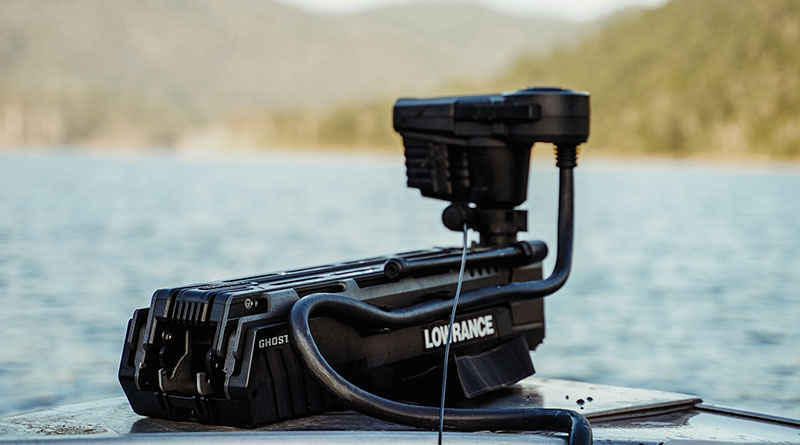
New trolling motors have user-friendly features.
by Glenn Hayes
Today’s trolling motors are a far cry from the first trolling motors I owned as a kid that would bolt on the back of a small boat and connect to a battery via alligator clips, with the good ones having a reverse feature on the handle (mine didn’t). While those are still available, new offerings from Garmin, Lowrance, Power Pole, Rhodan, Motor Guide and Minn Kota have trolling motors with so much new technology built in.
Spot anchoring
These new trolling motors are innovation marvels. Some features are shared and some are model-specific. The spot anchoring feature in these advanced trolling motors is the most desired and utilized.
Called different names by various manufacturers, the anchoring feature allows a vessel to stay in one position with the bow pointed in a specific heading without deploying a physical anchor. Of course, this is a great benefit while fishing, not only on smaller fishing craft but also on larger ones that want to fish one spot and then move on to the other with the least fuss or noise.
With a built-in GPS and heading sensor, these trolling motors can pinpoint position and heading and lock into those settings, keeping the vessel stationary even in strong wind and current. Because of this feature and the increasing size and power of trolling motors, you can now see these monster trolling motors mounted to the bows of large center consoles and other large craft looking for convenient and fast positioning anywhere on the water.
Even large catamarans like Freemans are equipped with massive twin trolling motors that sync to lock the boat in position while fishing or battling fish. Shaft lengths of 108 inches and a powerful thrust of 120 pounds each make this possible. Units like Rhodan’s can even work with the main engine running at a low speed to help anchor in heavy currents or help steer the boat while doing higher-speed trolling.
Of course, Rhodan is not the only company with trolling motors in its line that work for larger boats. Other manufacturers now offer longer shaft lengths in higher thrust motors to service the growing market.
Follow routes
Innovation in these new trolling motors doesn’t end at their anchoring capabilities. Utilizing the built-in GPS, these new trolling motors interface with
onboard chartplotters and fishfinders and follow specified routes. These can include a specified depth line, distance from shore, or steering to a saved or series of waypoints. Using these features, the angler can concentrate on fishing and not have to adjust the trolling motor constantly. The motors can also be fully controlled through the multifunction display and steer to and hold a position based on the chartplotter or fishfinder showing points of interest.
Other features
There are also other interesting and useful innovations in these new trolling motors. For example, Garmin’s Force Kraken and Kraken trolling motors have ultra-quiet, brushless, efficient motors, allowing more hours of use from onboard batteries. Other features include wireless controls, including foot pedals and handheld remotes. Garmin’s handheld remote has a unique point-to-steer feature. This remote acts a bit like some gaming controls in that the motor will steer to whichever direction the remote is pointed. With small and subtle movements, you can steer with precise control. Of course, it can also be steered in more traditional ways. Most of these high-end motors include handheld remotes, and most have optional wireless foot controls.
Lowrance has taken the learning curve out of using its foot controls on the Ghost trolling motors by making the fly-by-wire foot pedal feel like a cabled foot control. Those of us who have used this type of control can appreciate the similar feel and quickly come to like and use the Ghost motor easily without oversteering.
These new trolling motors can optionally house transducers built into the motor’s nose cone, such as Lowrance’s Ghost or Power Pole’s Move ZR, making systems more streamlined. Of course, these new trolling motors can also house the live-viewing type of transducers clamped to their shaft, creating the perfect location for scanning the waters ahead. Connected to fishfinders, these built-in transducers offer an accurate and noise-free view of the area around the boat’s bow. Any noise and interference have been eliminated with a brushless motor and noise-reducing engineering.
If you are in the market for a new trolling motor, there is one out that will not only meet your needs but will far exceed them. Although chock full of technology, using them can be almost as simple as my old childhood clamp-on model — and just as fun!




